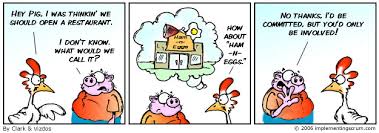The Different Stages Of Agile Teams
In a lot of organisations, the team velocity is the only KPI they notice and it is important to understand the influence of team dynamics on the velocity. Looking at the Agile manifesto, there is value some statements, like we value responding to change over following the plan, customer collaboration over contract negotiation and individuals and interactions over processes and tools.Organisations often expect a lot from self-supporting Agile project teams in today’s world.

The Different Stages Of Agile Teams
So what is the value of these Values? And why is Agile so popular at the moment.
Well, Agile does a lot of things organisations and customers alike. For example time to market, Self-organised teams and delivering goals on time. To be successful there we have to be aware of the critical success factors for Agile working. Those CSF are customer involvement, collaboration and communication. We need to communicate and the best way to communicate is face-to-face not by email not by messages.
You need to collaborate with the customer and team member’s if you’re not ready to communicate with the customer and other team member’s Agile is not the answer. And last but not least the customer must be truly involved throughout the project (and not only as a trigger point at the start).
In Agile we believe that the best architectures, requirements, and designs emerge from self-organising teams.
What is a team? The dictionary definition of a team is:
Team
noun
A group of players forming one side in a competitive game or sport.
“the village cricket team”
| synonyms: | group, squad, side, band, bunch, company, party, gang, selection, crew, troupe, set, line-up, array; |
In other words, a team is a group of people put together to work on a joint venture/project.
But in Agile we are talking about self-organising teams, which is a different level to what a normal team is. An Agile team works on development effectively together; these are cross-functional teams meaning they can all work on projects with other members of the team not being there.
The only thing that is important in a self-organised team is that they have the authority and flexibility to make a decision within their team on how they do their work. They are organising the work themselves.
With mutual responsibility, they have between the team is commitment.
There is a difference between commencement and involvement.

Teams and especially self-organizing teams become more mature and effective overtime and they go through some developmental stages. So what are the different stages of Agile team and what are the dynamics within in stage? And how do those stages influence the effectiveness and by that the velocity of the team? Also what Strategies can you use to deal with each stage?
Forming Stage
During the forming stage, members are usually excited and eager about the work ahead. But at the same time, they feel some anxiety and discontent because they are being forced into a different way of doing things. At this point, some new team members might avoid expressing their views and getting into conflict. During the forming stage, you can expect a lot of questions from the members about group responsibility as well as cooperation with new teammates.
- Effectiveness is high
- Individuals focusing on personal goals contributing to the project
- Looking for a group identity
Strategies to deal with the forming stage:
- A direct leadership style; provide clear expectations and consistent instructions.
- Try and create an environment of trust within the team.
- Setting the team norms, tell them what is expected.
Storming stage
In the second stage of team development, where the project team starts to arrange it’s self and try to gain each other’s trust.
This stage is normally where a lot of conflicts happen due to competition or responsibilities. Feelings shift within the team from the sense excitement to frustration or anger over how other team members are working.
At this point, questions about leadership, rules, responsibilities and reward systems are bound to arise, and they must be answered so your team can move onto the next stage.
- The Storming stage makes or breaks a team.
- Teams need to go through this struggle to form trust.
Strategies to deal with the Storming stage:
- Recognise there are different behaviours in the team and help other team members understand this as well.
- Encourage self-organisation amongst the team
- Coach team members in being more assertive or more effective listeners depending on the individuals
- Facilitate discussion
- Re-iterate the team goals
- Don’t be a referee
Norming
Disagreements and personal clashes are now being resolved. People are getting used to working together and have developed trust and respect for each other
- Productivity is increasing
- A team identity is being built
Strategies to deal with the Norming stage:
- Leadership should start taking a back seat
- Award the team for being self-organising
- Be there to consultant on problems not to solve them
Performing Stage
The performing stage is the most productive stage of any Agile project team hence the name. The team has now established clear roles; group members are focused on achieving common goals and often reaching a high level of success.
By this time, they are motivated and knowledgeable. Team members are now competent, autonomous and able to handle decisions – making progress without supervision. Dissent can happen and is allowed as long as it is channelled through the means decided in the Storming stage.
- The team now knows each other’s strengths and weaknesses and make use of each other.
Note: changing circumstances may cause the team to revert back to an early stage. For example, adding a new team member or a goal change.
Strategies to deal with the performing stage:
- Celebrate success
- Provide opportunities to share learning across teams.
- Be aware of significant changes
- Encourage group decisions to combat reverting back to an earlier stage
Adjourning Stage
Every project will come to an end. Characterised by an emotional rollercoaster, this ending stage can go two separate ways: with the sense of loss hovering in the air, members can either lose focus and moral or gain the momentum by coping with the task in hand.
- Normally the formal end to a project.
Strategies to deal with the Adjourning stage:
- Help them with any concerns about moving.
- Prepare your team for change and award team members their contributions.
So the next time you start a new (agile) project. Be aware of the stages your formed team goes through, and use the best strategy to deal efficiently with what is happening in the team. Within Pink Elephant we are using DISC communications styles to understand the differences of individuals in the team and help them to communicate and deal more efficient and effective with each other.
